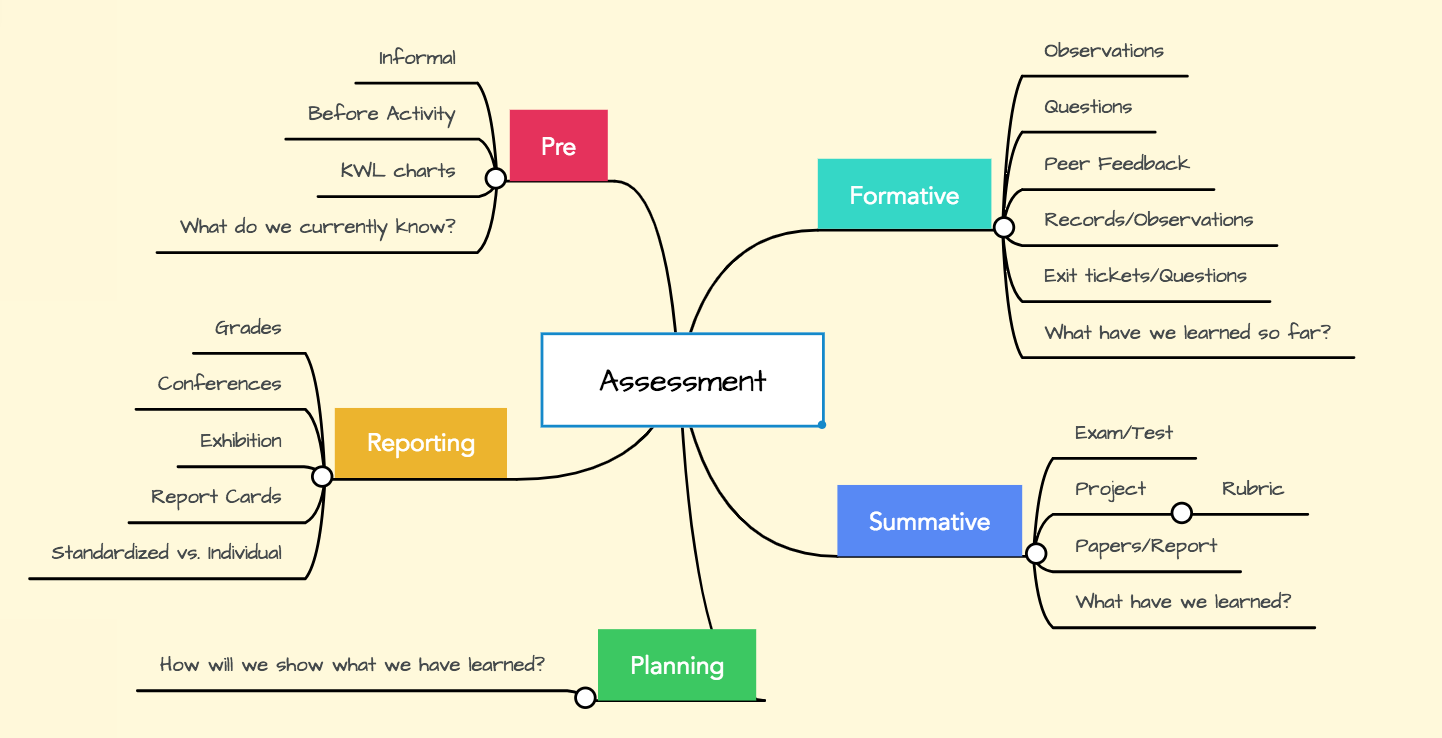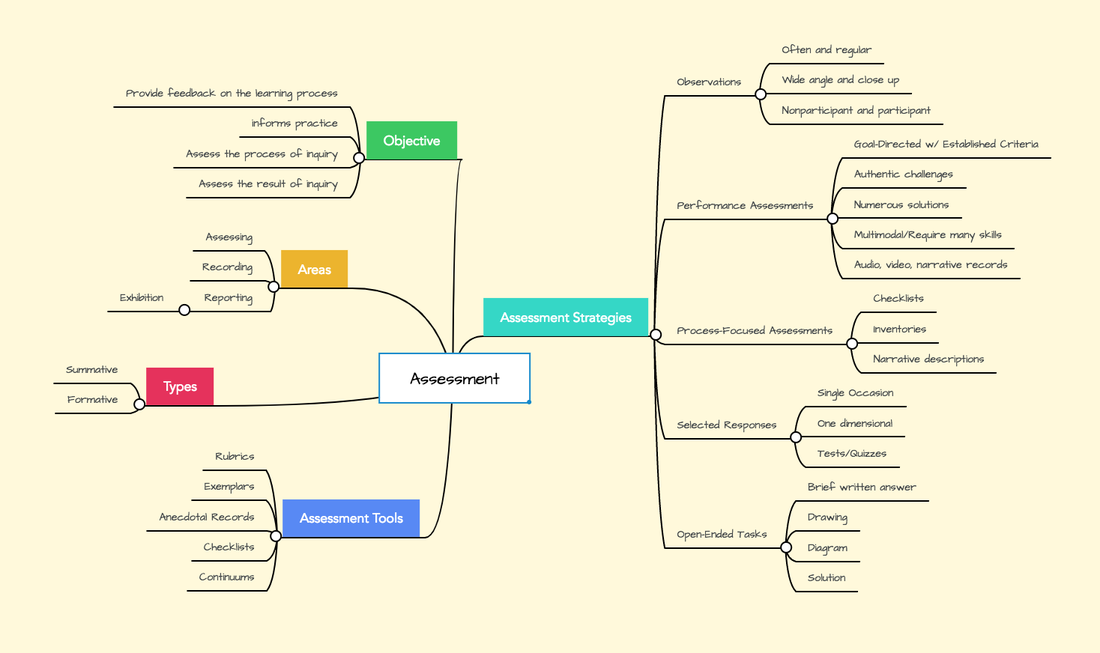|
For this activity we were asked to make a mind map of all of our knowledge relating to assessment, then after reading about assessment in PYP we were asked to change or adjust our mind map to reflect our new learning. Although I still like my first mind map, I made a new one that follows the PYP assessment vision. One of the main parts that I did not consider in my first attempt at the mind map was who assessment is for, teachers, students, admin, other teachers, parents, and the school community. Often assessment feels teacher and student heavy. In addition the PYP assessment seems to be observation focused which makes sense for the primary years. As a predominantly secondary teacher I am curious as to how this changes through the MYP and DP programs, my thoughts are that it becomes more student record/reflection based. All in all I feel that I had the same idea of assessment as outlined in the PYP reading but with different connections and formatting. Assessment as feedback
Assessment strategies and instruments
Approach to assessment
What teachers should be looking for
PYP Exhibition
Programme Evaluation
Types of Assessment
Effective Assessments
Observations/Records
Assessment Strategies
1 Comment
|
The Blog!. The writings and happenings of What's Going On In The Art Room, written by Ms. Alisa Blundon in Istanbul, Turkey
Recent PostsGuiding Students to Independence through the Artistic Thinking Process
Class Art Kits | Student Responsibility of Supples Inspiration Around the Room Draw Around the Room Archives
March 2020
Categories
All
|


 RSS Feed
RSS Feed
